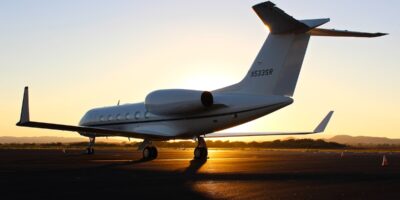Understanding Flight Tracking: How It Works and Its Importance
Flight tracking has revolutionized how people perceive air travel. It involves using technology to monitor the movement of airplanes in real-time. This concept not only benefits aviation professionals but also the general public, offering insights into flight statuses, delays, and more.
The Basics of Flight Tracking Technology
Flight tracking relies heavily on radar and satellite systems. Air traffic control (ATC) centers use radar to gather information on aircraft positions. Primary radar detects the airplane by bouncing radio waves off it. Secondary radar receives transponder signals from the aircraft, providing more detailed information like altitude and identity.
ADS-B (Automatic Dependent Surveillance-Broadcast) is another critical component. Aircraft equipped with ADS-B transmit their GPS position, altitude, and other data to ground stations and other nearby planes. This allows real-time tracking and enhances situational awareness for pilots and ATC.
Key Components and Data Points
Flight tracking systems use several data points. These include the aircraft’s unique identifier (registration number), type, departure and arrival airports, and estimated times of departure and arrival. Position data includes latitude, longitude, altitude, and speed.
Weather conditions play a role, too. Tracking systems often integrate meteorological data, aiding in understanding how weather influences flight paths and delays. This information is crucial for predicting and managing flight disruptions.
Real-Time Flight Tracking Platforms
Several platforms provide real-time flight tracking services. FlightAware and Flightradar24 are among the most popular. These platforms aggregate data from various sources, including ADS-B, radar, and airline timetables, to provide comprehensive flight information.
FlightAware utilizes a network of over 20,000 ADS-B ground stations worldwide. It also integrates FAA data for U.S. flights and Eurocontrol data for Europe. Flightradar24 combines ADS-B, Multilateration (MLAT), and satellite-based tracking to cover even remote regions where ground-based ADS-B may not reach.
Benefits of Flight Tracking for Airlines and Passengers
Flight tracking significantly benefits airlines. It helps optimize flight routes, improve fuel efficiency, and enhance safety. By monitoring aircraft in real-time, airlines can make informed decisions about rerouting, diversions, and handling in-flight emergencies.
Passengers benefit by accessing accurate flight information. They can check real-time flight status, anticipate delays, and plan accordingly. This transparency improves the travel experience and reduces stress associated with air travel uncertainties.
Environmental and Operational Impact
Efficient flight tracking contributes to environmental sustainability. Optimized flight paths reduce fuel consumption, lowering carbon emissions. Better route planning and on-time departures also reduce noise pollution around airports, benefiting local communities.
Operationally, it aids in managing airport congestion. Real-time data enables better coordination of ground services, from baggage handling to refueling and maintenance. This results in quicker turnaround times, improving overall airport efficiency.
Challenges in Flight Tracking
Despite its benefits, flight tracking faces challenges. In regions with limited ADS-B coverage, tracking accuracy may suffer. Remote areas and oceanic regions are particularly problematic. Satellite ADS-B is addressing this gap, but it remains expensive and complex to implement fully.
Data privacy and security are concerns. Sensitive flight data must be safeguarded against unauthorized access. Ensuring data integrity and preventing tampering are crucial for maintaining trust in flight tracking systems.
The Future of Flight Tracking
The future of flight tracking looks promising. Advances in technology, such as space-based ADS-B, will improve coverage and accuracy. Integration with artificial intelligence (AI) could enhance predictive capabilities, helping to foresee and mitigate potential issues before they escalate.
Blockchain technology could enhance data security and transparency. It provides a tamper-proof system for recording and sharing flight data, reducing the risk of unauthorized alterations. Collaborations between aviation authorities and tech companies will drive these innovations forward.
Flight tracking has already transformed the aviation industry. As technology continues to advance, its role will only become more essential. Passengers, airlines, and airport operators will reap the benefits of more efficient, safe, and sustainable air travel.
“`




Subscribe for Updates
Get the latest articles delivered to your inbox.
We respect your privacy. Unsubscribe anytime.